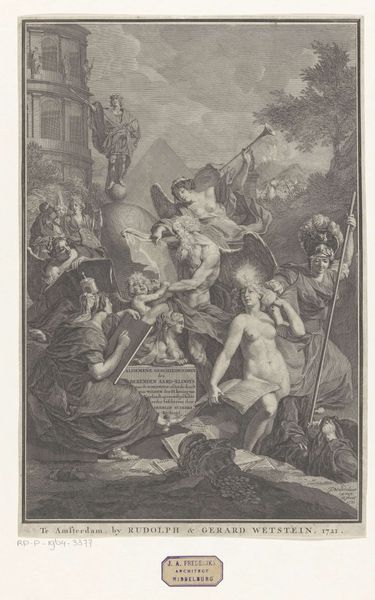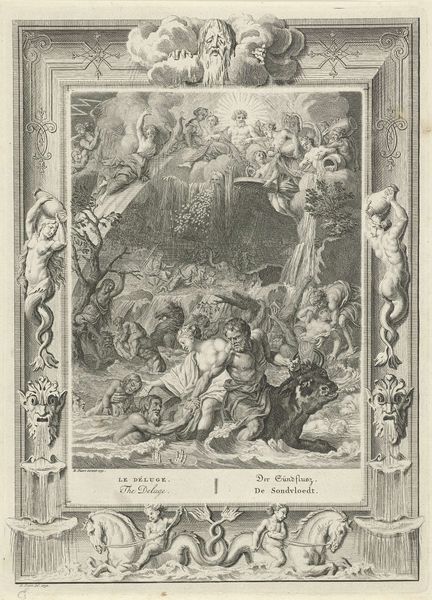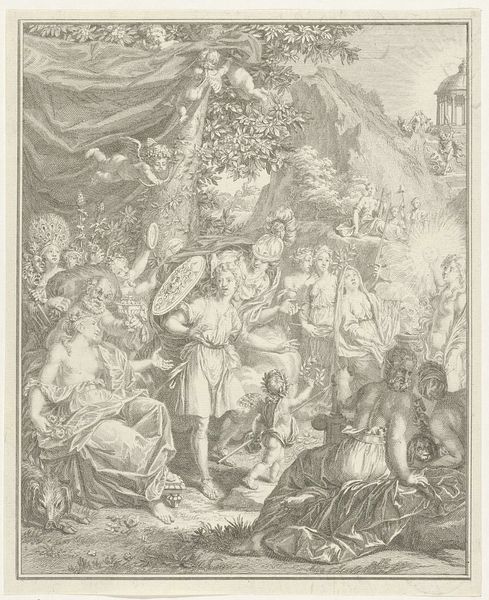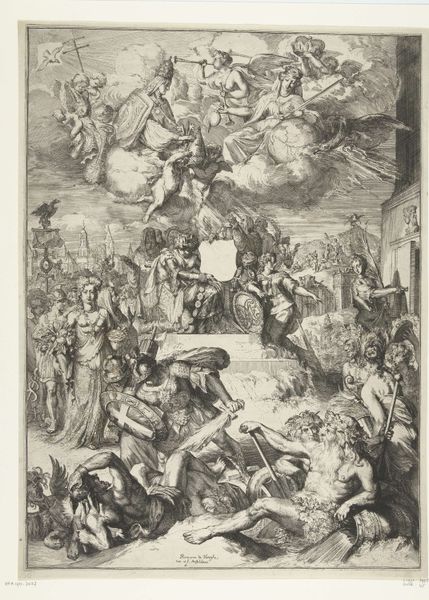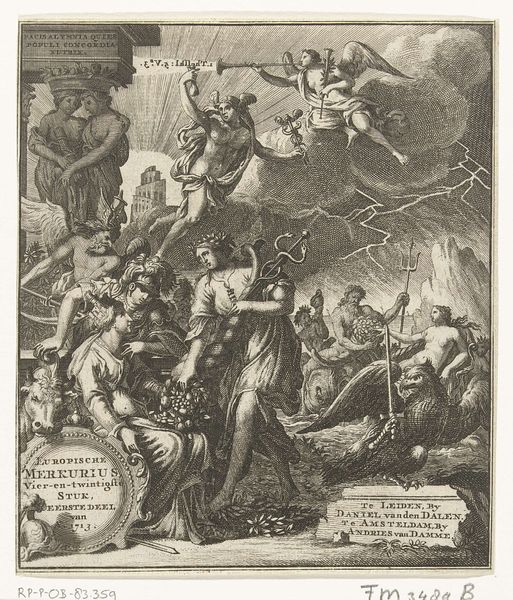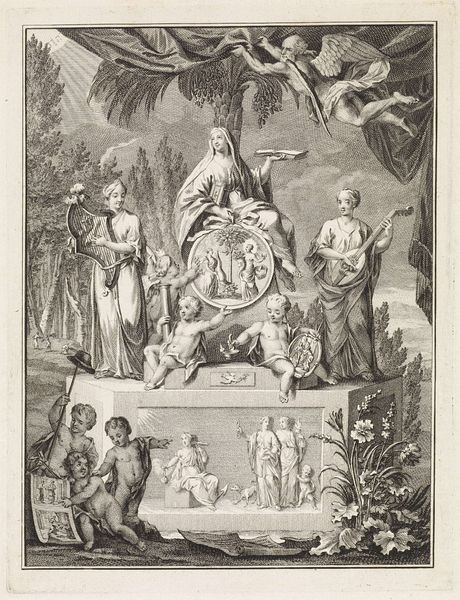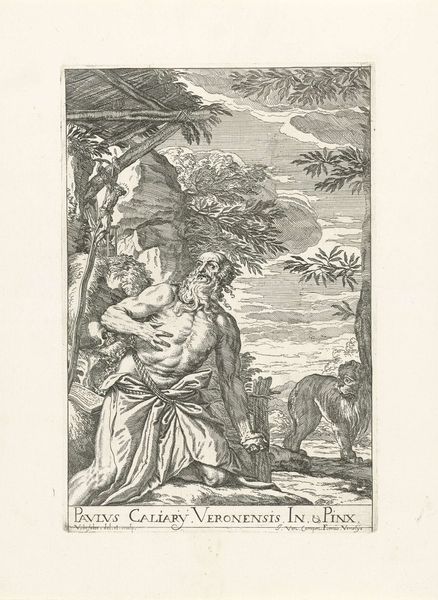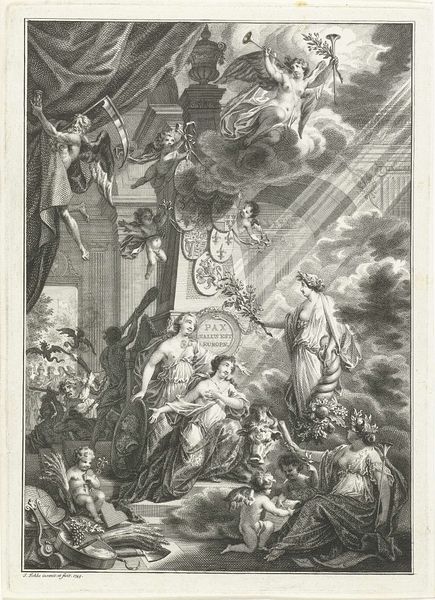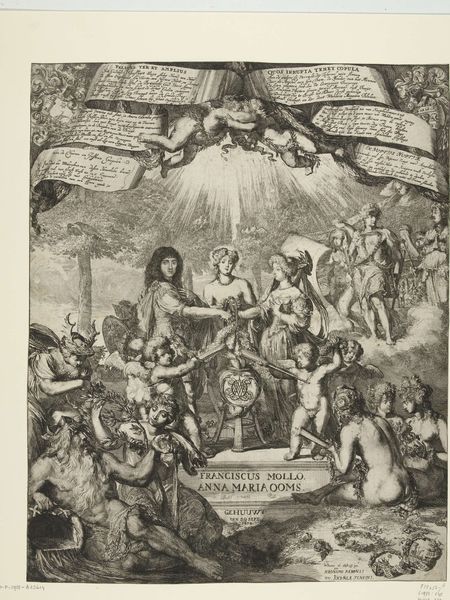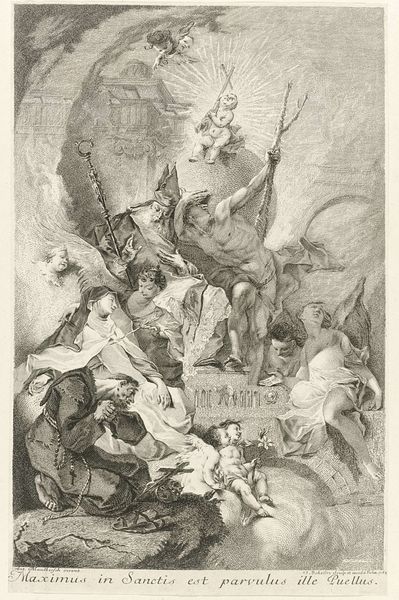
Allegorie op de geboorte van de prins van Oranje, 1748 1748
0:00
0:00
balthasarsigmundsetletzky
Rijksmuseum
graphic-art, print, engraving
#
portrait
#
graphic-art
#
allegory
#
baroque
# print
#
old engraving style
#
text
#
history-painting
#
engraving
Dimensions: height 365 mm, width 210 mm
Copyright: Rijks Museum: Open Domain
Curator: We’re looking at “Allegorie op de geboorte van de prins van Oranje, 1748,” an engraving by Balthasar Sigmund Setletzky here at the Rijksmuseum. Editor: It strikes me as overwhelmingly optimistic! There's so much symbolic imagery crammed into this single print. I wonder, though, about the labor involved in such detailed engraving, and its accessibility in the 18th century. Curator: It’s indeed a piece teeming with the visual language of the time, produced to celebrate a significant birth. Look at the way Setletzky combined allegorical figures with actual portraits. He’s cleverly using this print form to disseminate political ideology. Editor: Precisely. Consider the physical process – the skill required to carve those fine lines, the sheer time investment. Prints like these, circulated widely, helped construct a particular image of the Dutch monarchy. We must also remember this print in relation to socio-economic forces. Who was commissioning it and who consumed it? Curator: Good points. You can see the influence of Baroque style in its composition; the swirling clouds, the abundant cherubs. They really amp up the celebratory message and the sense of divine blessing on the new Prince. I see this work very much tied into political messaging and self representation during the 18th century. Editor: Beyond the visual splendor, though, is the actual labour behind it, and more than that, there is the intended public message and consumption which reveals so much about societal values at that time. Consider, also, the print's journey – from the artist's hand to workshops, distributors and the various homes it lands in, shaping political opinions, ideas and identity across diverse demographics. Curator: Absolutely, the print would have circulated widely among the upper classes and those aspiring to such status, solidifying their loyalty and conveying power. Editor: This piece showcases not only artistic skill but also how visual culture functions within broader networks of production, distribution and societal influence. That is to say, art serves as both aesthetic experience and material embodiment of socio-economic history. Curator: Well, looking at this piece has certainly been an engaging foray into the confluence of art, power, and social context. Editor: Indeed! It serves as a reminder that art, even something as seemingly celebratory as this print, is fundamentally shaped by materials, work, politics, and its place in society.
Comments
No comments
Be the first to comment and join the conversation on the ultimate creative platform.

